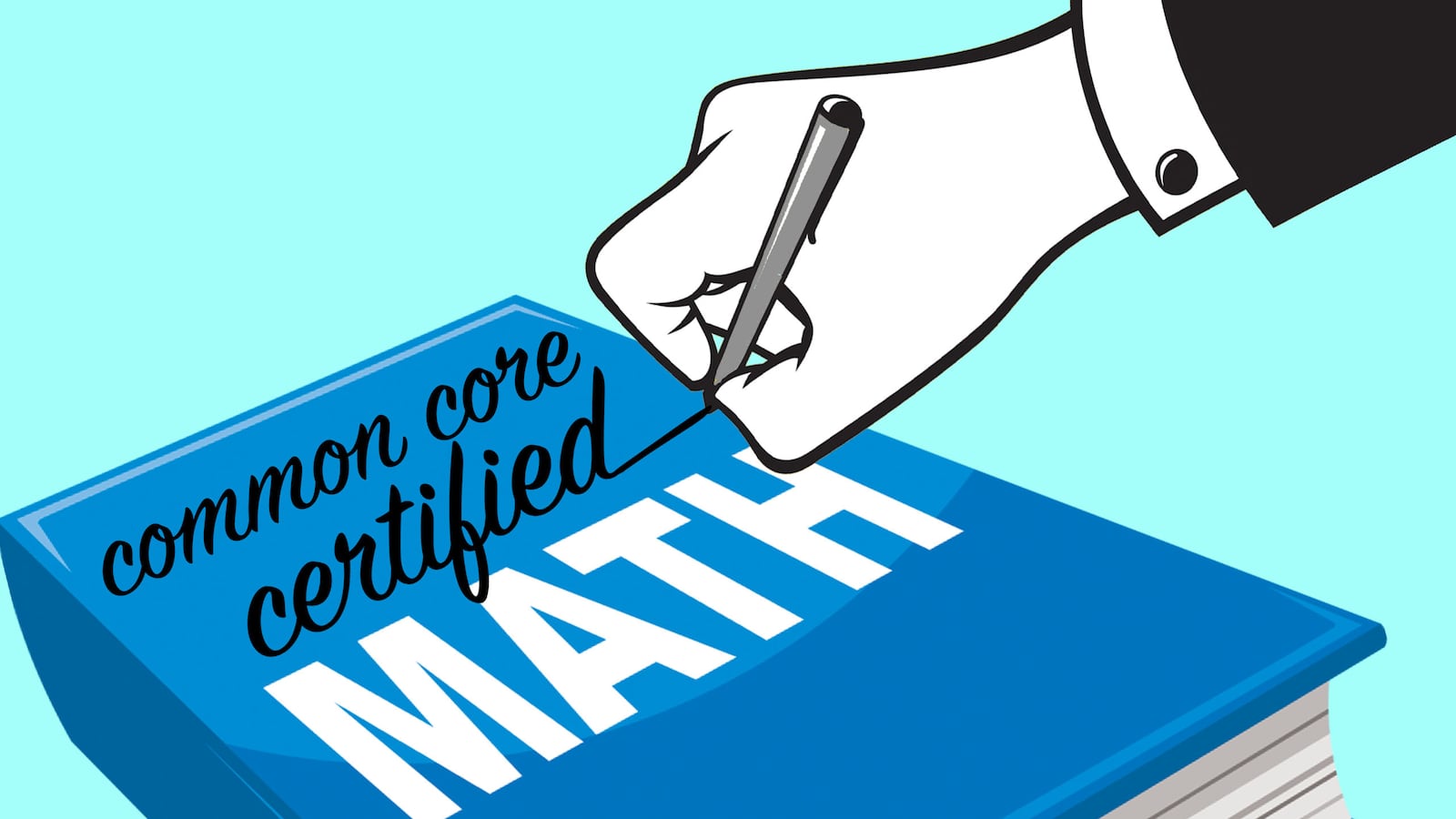Cheryl Schafer was a veteran math teacher by the time Common Core arrived in New York back in 2010. It was apparent to her almost immediately that teachers didn’t have the materials they needed to teach to the new national standards.
Take a middle school staple like the Pythagorean Theorem: “One text series had it as a sixth grade unit, one had it at eighth grade, and the Common Core wanted us to teach it in seventh grade,” Schafer recalled. “So it didn’t matter what you were using: There was disagreement all over the place.”
In response to the new standards, textbook publishers touted new editions they said were aligned to the Common Core. But nearly all of them were just repackaged versions of earlier books.
And even five years later, the vast majority of textbooks say they’re aligned with the Common Core when they actually aren’t, creating a huge burden for teachers whose performance is often tied to their students’ test scores based on those standards.
“If you don't have the material that you need, it makes your job incredibly more difficult,” Schafer said. Teachers were left scrambling, doing their best to make do with materials that often didn’t line up with what they were supposed to be teaching.
Schafer retired last year, pushed out of the classroom by stage four breast cancer. But she hasn’t stopped working in education. Today she’s a reviewer for a nonprofit called EdReports, whose executive director says the group wants to become a Consumer Reports for education. The group is funded by the Gates Foundation, the massive organization that led development and adoption of Common Core and hires teachers to conduct intensive reviews of textbooks.
Its ultimate goal is to exert a meaningful positive force on the multibillion-dollar textbook industry, which gets nearly all its income from taxpayer.
This spring, EdReports conducted its first round of reviews, looking at the best-selling math textbooks for elementary and middle school students. Of the more than 80 textbooks it reviewed, just 11 met expectations for alignment with the Common Core. Nine of those books were from a single series, “Eureka Math” by publisher Great Minds, whose materials aligned with Common Core from kindergarten through eighth grade.
EdReports released publisher responses alongside its own reviews. In a multi-page statement, publishing giant Pearson—which had zero textbooks evaluated as being aligned with the Common Core—said EdReports’ evaluations “reflect a very narrow interpretation” of Common Core “and fall short of the true intent of the standards.”
Houghton Mifflin Harcourt—which had over 30 texts evaluated, none of which fully met standards—said it was “fully committed to working with our customers” and would continue to work toward improving its products.
As political fights over Common Core continue to rage, the new standards have largely become a fact of life for most American teachers. They’re expected to teach to a test for those new standards. How each child performs on those tests is playing an increasing role in evaluations of the teachers themselves—and, increasingly, it even affects their pay.
That’s why teachers need materials that actually align with the Common Core: Their paycheck could depend on it.
So if a teacher is saddled with a textbook that doesn’t align with the Common Core, they need to spend time patching together materials that will. That might mean a handful of chapters from one book paired with lesson plans from the Internet or another text, plus an assignment or evaluation created from scratch.
That is crucial but time-consuming work—and the more time a teacher spends on that, the less time he or she has to plan the kind of deep, meaningful lessons that resonate with their students.
“For teachers to do their best work, they need to have materials that meet the high and rigorous new—well, newish, now—standards that have been put in place,” said Eric Hirsch, the executive director of EdReports. “Teachers knowing the textbooks—digital or an actual book—still form the backbone of the curriculum they use. Making sure those materials hit those standards allows them to do their best work by kids.”
Many publishers—particularly those who scored poorly on the evaluation—criticized EdReports’ methodology. TPS Publishing, for example, argued that while its main textbook may not have been aligned with the Common Core, its materials would be if reviewers considered supplements, like workbooks or online material. But EdReports argues that those supplements often go untouched by busy teachers, who frequently only look at the primary text and its accompanying teacher’s edition.
“Not everyone gets the supplementary material,” said Sheldon Fine, a former teacher and administrator who now works to train math teachers through the organization Math For America. “And I know from being in schools, very often you get a kit and you use what you need to use and those [supplemental] things sit on the shelf. To expect teachers to go all over the place to put things together is unfair.”
EdReports aims to become something like a Consumer Reports for Common Core, reviewing textbooks the same way the consumer protection magazine does for something like cars. But while cars have to meet certain standards before they’re even sold—federal safety requirements, for example—there’s no such cutoff for educational materials.
So EdReports decided that if a book didn’t meet a minimum level of alignment with Common Core standards, it wouldn’t advance the book into its next stage of evaluation. There were just too many books in the marketplace to devote time to ones that wouldn’t serve teachers or students well.
Under the Common Core, the textbook industry is one in transition. Big states like California and Texas, which once had a more outsized influence on content, have less influence now that books are expected to align with national standards. That shift creates a bit of a vacuum in terms of market influencers—a hole in the market EdReports is trying to fill. The idea is that by adding a centralized source of information into the marketplace, everyone will get a better product: High-quality books will be easier to identify and low-scoring publishers will work to improve future editions.
EdReports starts its second round of reviews this month and, in addition to reviewing new books, it will also return to some it found didn’t fully align with the Common Core. This move comes partly in response to criticisms from publishers and some educators who said the nonprofit took too narrow of an approach in its critiques, but also to help districts who are stuck with expensive books that may not be fully aligned.
“We wanted to make sure [we could help] a district that had already done an adoption on some of these textbooks—so [we] could ensure teachers have what they need,” Hirsch said.






